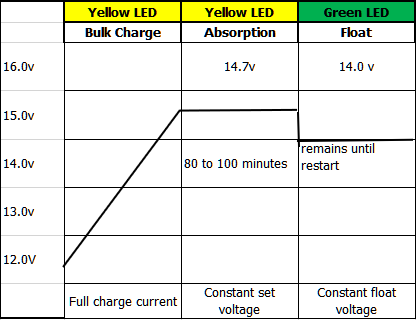Alternator Charging basics
Understanding Your Battery and Alternator System
Your battery is the heart of your electrical system. It powers all your onboard devices, while the alternator recharges it during engine operation.
An alternator is essentially a generator—it converts mechanical energy into electrical energy. Connected to your engine, it produces current based on how much field current is fed into it. The more field current, the more output current the alternator generates.
The Role of the Regulator
The alternator regulator controls the field current to maintain a target battery voltage.
- By adjusting the field current, the regulator indirectly controls the charging current
- This charging current determines how quickly and efficiently your battery reaches the desired voltage
It can be a bit confusing—but simply put, the regulator ensures your battery charges correctly by managing how much current the alternator produces.
The Problem with Standard (“Dumb”) Regulators
Most basic regulators have two major limitations:
- They only support a single voltage target
- That target is often inappropriate for non-automotive batteries
Wet-cell batteries, for example, require two voltage set points to charge safely and efficiently.
Why Multi-Stage Charging Matters
When the engine starts, we want the battery to charge quickly. This is done by setting a voltage target around 14.4V (depending on battery type).
- At this point, the battery reaches ~80% capacity
- Gassing begins, indicating the battery is nearing full charge
To avoid damage, we must not exceed this gassing voltage—but going too far below it slows charging unnecessarily.
As the charging rate naturally tapers off, we switch to a float stage by reducing the voltage by about 0.6V. This maintains the battery without overcharging and is essential for long-term health.
Why Standard Regulators Fall Short
Typical “dumb” regulators target voltages between 13.8V and 14.2V—which is:
- Too low for effective absorption charging
- Too high for safe float charging
This results in the worst of both worlds:
- Batteries don’t fully charge during engine runs
- Long-term overcharging shortens battery life
A standard charging curve looks something like this:

